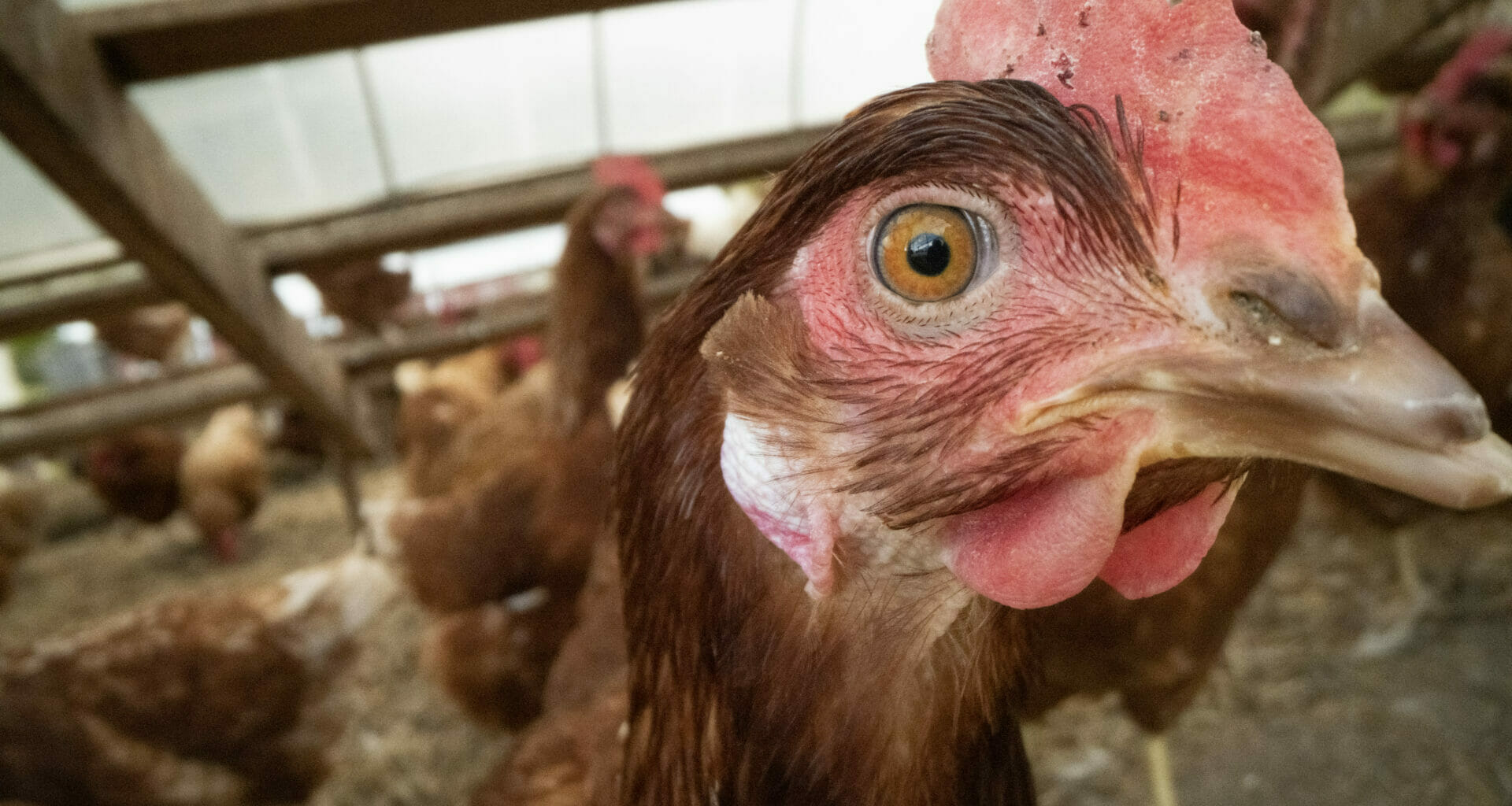Nearly 90,000 chickens have been culled in Scotland to prevent the spread of the UK’s worst ever bird flu outbreak, The Ferret can reveal.
Scottish Government data – obtained via freedom of information law – shows that 89,113 hens were culled between 22 January and 14 October, along with hundreds of ducks, cockatiel, turkeys, geese, guinea fowl and owls. Fresh bird flu cases have emerged in recent days.
The National Farming Union of Scotland (NFUS) called on the Scottish Government to “start listening to the industry” and follow the UK Government in ruling that all poultry and captive birds be kept indoors to help stop the spread from 7 November.
The Scottish Government said it was “keeping the situation under constant review, however the current evidence does not yet justify imposing a housing order in Scotland.”
| Location | Date confirmed | No. of birds culled | Species |
|---|---|---|---|
| Near Inverurie, Aberdeenshire | 22/01/2022 | 38 | Chicken, Duck, Turkey, Geese, Guinea fowl |
| Near Collieston, Aberdeenshire | 11/03/2022 | 3 | Ducks |
| Near Beith, North Ayrshire | 18/03/2022 | 104 | Owl, Cockatiel, Ducks, Chickens |
| Near Strichen, Aberdeenshire | 19/03/2022 | 89,113 | Chickens |
| Island of Whalsay, Shetland | 30/05/2022 | 139 | Ducks, Chickens |
| Near Birsay, Orkney | 06/07/2022 | 10 | Chickens |
| Great Bernera, Outer Hebrides | 08/10/2022 | 51 | Chickens, Guinea fowl |
| Near Tankerness, Orkney | 14/10/2022 | 2 | Chickens |
| Near Huntly, Aberdeenshire | 29/10/2022 | Not available at this point | Chickens |
| Near Kirkwall, Orkney | 30/10/2022 | Not available at this point | Chickens, ducks, pigeons |
The bulk of recorded culls so far involved 89,113 hens at a Farmlay Eggs breeding unit at Auchtygills, near Strichen, Aberdeenshire. The birds were slaughtered on 19 March after bird flu was discovered at the site.
Other culls involved smaller numbers of hens, ducks, turkeys, geese, guinea fowl and owls in various locations in Aberdeenshire, North Ayrshire, Orkney, Shetland and the Outer Hebrides.
Birds were also culled near Huntly, Aberdeenshire on 29 October and near Kirkwall, Orkney on 30 October. The Scottish Government said these cull numbers were not yet available.
The NFUS stressed that poultry farmers “have had to live with the heightened threat of avian influenza at this time of year for several years now”, which it linked to wild and migratory birds.
“As poultry producers, the health and welfare of our birds is our number one priority, and introducing housing measures alongside the existing additional biosecurity requirements can hugely help minimise the spread of this devastating disease,” said NFUS poultry working group chair, Robert Thompson.
“We remain in active discussions with Scottish Government and the Chief Veterinary Officer for Scotland and while we await their decision on any changes to current biosecurity requirements, I urge every poultry keeper, whether you have one hen in the back garden or a large poultry business, to take biosecurity measures seriously and take steps to protect your birds from this devastating disease.”
Wild birds impacted by bird flu
RSPB Scotland said the outbreak was “unprecedented in its impacts on wild birds”.
At least 61 UK species have been found to have been infected to date with the latest bird flu strain, which originated in poultry in East Asia in the 1990, said Paul Walton, head of species and habitats.
Since last winter, the current strain has since killed around 16,000 barnacle geese on the Dumfriesshire coast – one third of the global population – and four per cent of the world’s great skuas on Foula, Shetland.
Swathes of seabirds, particularly gannets – which Walton said Scotland “is globally important for” – have also died due to bird flu. “We won’t have a clear picture of the impact on seabirds until they return next year, and assessments are complete, but impacts could be catastrophic,” he added.
A Scottish Government spokesperson said: “While maintaining high levels of biosecurity among domestic poultry flocks helps protect against disease, addressing the disease among wild birds poses significant challenges.
“Avian influenza is a disease that affects the wild bird population globally. The Scottish Government is taking the situation very seriously and is working hard with partner organisations to progress measures to respond to the reports of increased mortality among wild bird populations.
“Updated advice for local authorities, landowners, wildlife rescue centres and members of the public regarding reporting, collection and safe disposal of wild bird carcasses has been published.”
Image credit: RawPixel. CC0 1.0 Universal (CC0 1.0) Public Domain Dedication















I think you might mean hens rather than chickens??